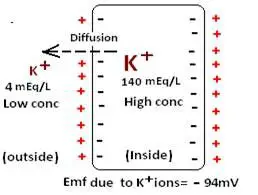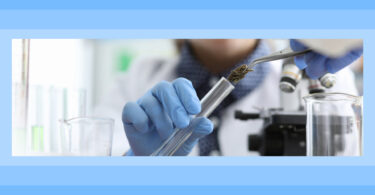Unlike many pharmaceutical interventions that have been subjected to large, replicated clinical trials, clinical and other research into homeopathy has its limitations. In most cases, the numbers of people participating in clinical trials on homeopathy is often relatively small and few trials have been replicated. The reason for this is that unlike drugs, homeopathic medicines in most cases cannot be patented, so there is little incentive to invest the vast quantities of money that drug companies spend, if they cannot monopolise the results. Interestingly, surveys have found that no more than about half of all standard medical interventions have been validated by controlled clinical trials (Imrie R, The evidence for evidence-based medicine. Complementary Therapies in Medicine (2000), 8, 123-126). However, homoeopathy has produced a significant number of successful clinical trials, and summaries of some recent or recently unearthed examples follow.
Human Research
- Robertson A, Suryanarayanan R, Banerjee A. Homeopathic Arnica montana for post-tonsillectomy analgesia: a randomised placebo control trial. Homeopathy, 2007, 96, 1, 17-21. In this trial, 190 people undergoing tonsillectomy were randomly assigned to receive Arnica 30C or a placebo at a dose rate of 2 tablets 6 times in the first post-operative day and then 2 tablets twice a day for the next 7 days. On a patient-assessed 14 days post-operative visual analogue scale for pain, those given the Arnica 30C were found to have a statistically significant decrease in pain scores compared to placebo.
2. Saruggia M, Corghi E. Effects of homoeopathic dilutions of China rubra on intradialytic symptomatology in patients treated with haemodialysis. British Homoeopathic Journal, 1992, 81, 2, 86-88. Using a double-blind, randomised, crossover, placebo- controlled trial design, 35 people with end-stage renal failure on regular haemodialysis were assessed to determine their response to either placebo or China rubra 9C. Those people using the China experienced statistically significant relief from asthenia, headache and lethargy.
- Schmiedel V, Klein P. A complex homeopathic preparation for the symptomatic treatment of upper respiratory infections associated with the common cold: An observational study. Explore (NY). 2006, 2, 2, 109-14. 379 people suffering from upper respiratory infections were given either conventional medical treatment (antihistamines, anti-tussives, or nonsteroidal anti-inflammatory drugs) or a combination homeopathic product. Using variables such as fatigue, sensation of illness, chill/tremor, aching joints, overall severity of illness, sum of all clinical variables, and temperature to assess the effects of either form of therapy, the researchers found that both approaches were effective, although the homeopathic combination provided faster relief from symptoms (77% were improved within 3 days compared to 62%).
- Schneider C, et al. A homeopathic ointment preparation compared with 1% diclofenac gel for acute symptomatic treatment of tendinopathy. Explore (NY), 2005, 1, 6, 446-52. In this non-randomised, observational study carried out in 95 German homeopathic and conventional medical clinics, 357 people with various forms of tendinopathy were given either an ointment containing a mixture of homeopathic remedies, or Diclofenac (a popular nonsteroidal anti-inflammatory agent), for up to 28 days. Using a four-degree scale on pain-related variables related to motility, and on overall treatment outcome, the ointment containing the mixture of homeopathic remedies provided a therapeutic outcome that was superior to Diclofenac.
- Schneider C, et al. The role of a homoeopathic preparation compared with conventional therapy in the treatment of injuries: an observational cohort study. Complement Ther Med, 2008, 16, 1, 22-7. The researchers in this study set out to compare the effectiveness of a homeopathic combination product (Traumeel) with conventional medical treatment for injuries. 125 people suffering from various musculoskeletal injuries were treated either with the homeopathic combination or conventional medicine and were assessed for resolution of the complaint at the end of the trial period. At this point, the 59.4% of the group receiving the homeopathic combination had complete resolution compared with 57.8% of the group treated with conventional medicine. 6.3% of the latter group experienced adverse reactions to the treatment and none of those on the homeopathic combination experienced side effects.
- Seeley BM, et al. Effect of homeopathic Arnica montana on bruising in face-lifts: results of a randomized, double-blind, placebo-controlled clinical trial. Arch Facial Plast Surg, 2006, 8, 1, 54-9. In this trial, 29 people who were undergoing facelifts were randomised to receive either perioperative homeopathic arnica, or placebo. They were examined post-operatively for bruising at days 1, 5, 7 and 10. Assessment done at days 1 and 7 showed a signification reduction in bruising when compared to placebo.
Animal Research
- Reis LS, et al. Matricaria chamomilla CH12 decreases handling stress in Nelore calves. J Vet Sci, 2006, 7, 2, 189-92. In this study, 60 Nelore calves were randomly assigned to receive either Chamomilla 12C or no Chamomilla 12C in their feed. Following this they were subjected to short periods of handling stress after which blood samples were taken to assess their cortisol levels. After the results from the 2 groups had been compared, it was found the calves given Chamomilla 12C had significantly lower levels of blood cortisol than those that did not, indicating that they were better able to deal with stress as a result of ingestion of the homeopathic medicine.
- Varshney JP, Naresh R. Comparative efficacy of homeopathic and allopathic systems of medicine in the management of clinical mastitis of Indian dairy cows. Homeopathy, 2005, 94, 2, 81-5. Bovine mastitis is a serious problem in India and for many Indian dairy farmers, standard veterinary treatment, because of its cost, is not a viable option. With this in mind, researchers treated 96 lactating dairy cattle suffering from mastitis using a homeopathic combination product (Group A). These were compared with a group of the same number of lactating dairy cattle suffering from mastitis that were treated with antibiotics (Group B). The treatment outcomes, duration and costs were then compared. Cattle from Group A had a successful treatment response rate of 86.6%, a mean time to recovery of 7.7 days and a total cost of (US) 47 cents. Cattle from Group B had a successful treatment response rate of 59.2%, a mean time to recovery of 4.5 days and a total cost of (US) $3.28.
Plant Research
- Sukul NM, Chakraborty I, Sukul A. Potentized Cina reduces root-knot nematode in infestation of cucumber and the antinematode effect is transmitted through water. Int J High Dilution Res, 2013, 12, 44, 133-134. Proceedings of the XXVII GIRI Symposium; 2013, 03-04; Bern (Switzerland) 133. Root-knot nematodes belonging to Meloidogyne incognita are responsible for substantial loss in yield of vegetable crops all over the world. Chemical nematicides are expensive, cause environmental pollution and leave toxic residues in crops. In this Indian research, homeopathically prepared Cina was investigated for its properties as a nematicide and whether these properties could be dispersed through water. To do this, aseptically germinated seeds of cucumber, (Cucumis sativus L) were grown in sterilised pots. The pots were divided into 5 groups (10 pots per group): (i) uninoculated untreated, (ii) inoculated untreated, (iii) inoculated and treated with Cina 200C, (iv) inoculated and treated indirectly by connection with wet cotton threads to group (iii) and (v) inoculated and treated with Ethanol 200C as a remedy control. Groups (ii), (iii), (iv) and (v) were inoculated with the second stage larvae of Meloidogyne incognita when the plants were at six leave stage. Just before inoculation plants of group (iii) and (iv) were connected leaf by leaf by wet cotton threads encased in polythene tubes. Then plants of group (iii) were directly pretreated by foliar spray with Cina 200C diluted with distilled water (1:500). Two days after inoculation plants of group (iii) were treated again with Cina 200C in a similar way. After 2 weeks all the plants were harvested and measured for shoot length, shoot weight, root length, root weight, numbers of leaves per plant, leaf area, root gall number per plant, nematode population in roots and rhizospheric soil, leaf chlorophyll content, leaf sugar, protein content and root protein content. Analysis of the data showed a strong association between the use of Cina 200C, a reduction in nematode population, and a significant reduction in their effects. The data also showed that these effects were transferred through water.
 In-Vitro Research
In-Vitro Research
- Venard C, et al. Comparative Analysis of Gelsemine and Gelsemium sempervirens Activity on Neurosteroid Allopregnanolone Formation in the Spinal Cord and Limbic System. Evid Based Complement Alternat Med, 2011;2011:407617. doi: 10.1093/ecam/nep083. Epub 2011 Jun 16. Scientists at France’s University of Strasbourg built on previous work done on Gelsemium by exposing rat limbic and spinal cord tissue to 5C, 9C and 15C homeopathic preparations of Gelsemium and gelsemine, one of Gelsemium’s active constituents, to determine their effects on pain and anxiety at a cellular level. During this process it was shown that the 5C potencies of both remedies, and to a lesser extent the 9C potencies of both remedies, increased the conversion of progesterone to allopregnanolone in these tissues, indicating that exposure to these remedies was associated with an analgesic and anxiolytic effect.





